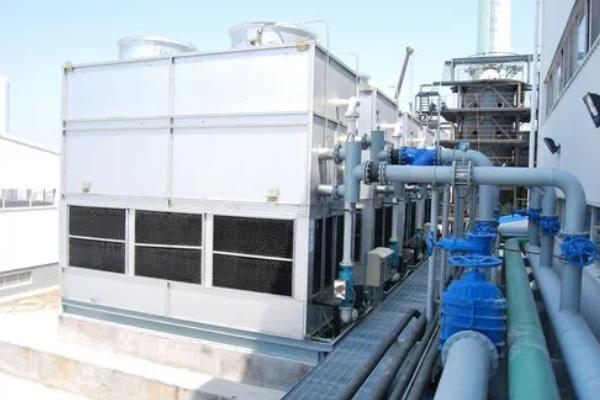One, countercurrent tower
1, water in the tower filling, water from top to bottom, air from bottom to bottom, the two flow to the opposite of a cooling tower.
2. The countercurrent cooling tower has good thermal performance and is divided into three cooling sections: the space from the water distributor to the packing top, the water temperature of this section is higher, so the heat can still be transferred to the air; Filler water and air heat exchange section; Fill to the catchment basin space flood section, water cooling in this section is called tail effect. The water temperature in our country in the north can decrease 1-2℃. To sum up, the countercurrent tower than the cross flow tower in the same situation, packing volume is about 20% smaller, countercurrent tower heat exchange process is more reasonable and high cooling effect.

3. The water distribution system is not easy to plug, the water filling is not easy to keep clean and aging, the moisture reflux is small, and the anti-freezing and icing measures are easier. Multiple sets can be combined design, winter to the required water temperature and water can be combined with a single operation or all shut down fan.
4. Easy construction, installation and maintenance, low cost, commonly used in air conditioning and industrial large and medium cooling circulating water.
Two, cross flow tower
l, the water in the tower filling, water from the top down, the air from the tower outside the horizontal flow to the tower, the two flow is vertical orthogonal. Commonly used in residential areas with strict noise requirements, it is a cooling cycle tower used more in the air conditioning sector. Advantages: energy saving, low water pressure, low wind resistance, also equipped with low speed motor, no dripping noise and wind noise, packing and water distribution system maintenance is convenient.
2, can be randomly constructed with the shape of the building multiple foundation placed, according to the required water temperature, respectively start a single or multiple cooling towers.
3. It should be noted that the framework should have more packing volume when the heat exchange is 40% more, the packing is easy to age, the water distribution hole is easy to block, the anti-icing is not good, and the moisture reflux is large. The advantages of a cross-flow tower are the disadvantages of a counter-flow tower.
Three, closed cooling tower
1, closed cooling tower, also known as closed cooling tower, evaporative cooler. It is a kind of deformation and development of traditional cooling tower. It is actually a combination of evaporative cooling tower, cooler and wet cooling tower. It is a horizontal evaporative cooling tower, where the process fluid flows through the pipe and the air flows out of the pipe, and the two do not contact each other. The water in the reservoir at the bottom of the tower is extracted by the circulating pump and sent to the outside of the pipe to spray down evenly. It does not contact with hot water or refrigerant and air outside the pipe, and becomes a closed cooling tower, which enhances the heat and mass transfer effect by spraying water.
2, closed cooling tower is suitable for all kinds of cooling systems with high circulating water quality requirements, and has application prospects in electric power, chemical, steel, food and many industrial sectors. On the other hand, compared with the air-cooled heat exchanger, the evaporative cooling tower makes use of the latent heat of evaporation from the water on the lower side of the pipe to significantly enhance the heat and mass transfer on the air side, and also has obvious advantages.
In northern China, the temperature is usually below zero in winter, so the problem of anti-freezing operation of the closed cooling tower is becoming more and more prominent. If not solved properly, the heat exchange tube or other parts of the cooling tower may be damaged by freezing. According to different process characteristics, some closed cooling towers operate all day in winter, some run for part of the time, and some are almost not used. But they all need to consider the problem of frost protection.
Post time: Jun-14-2023

